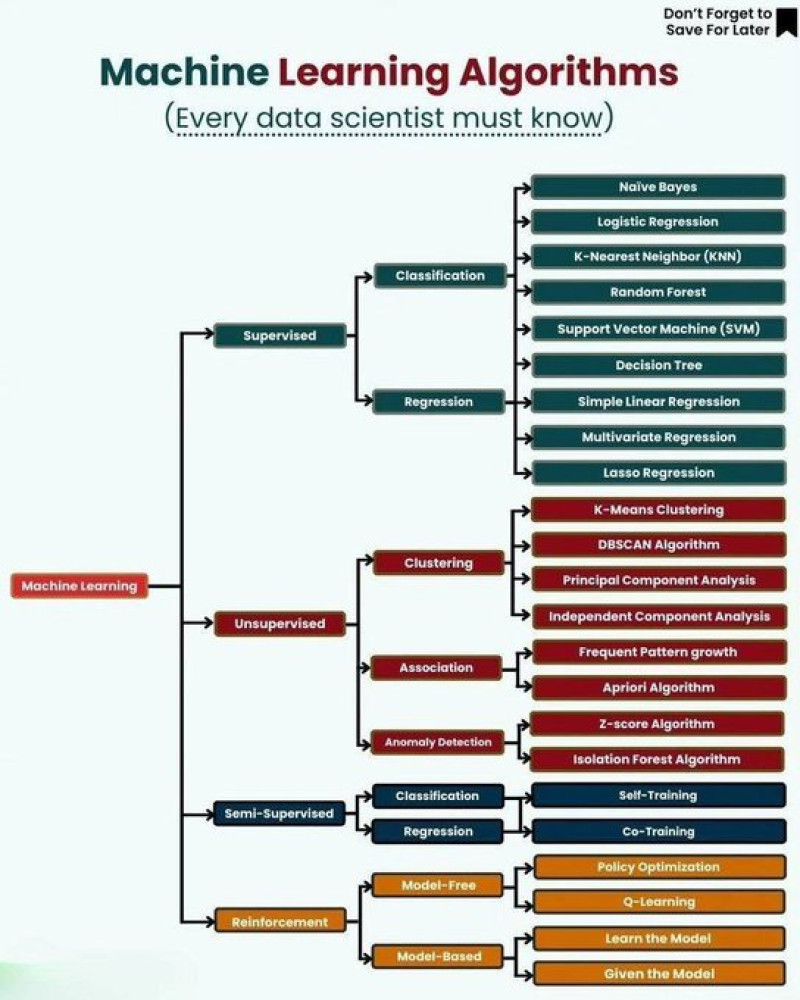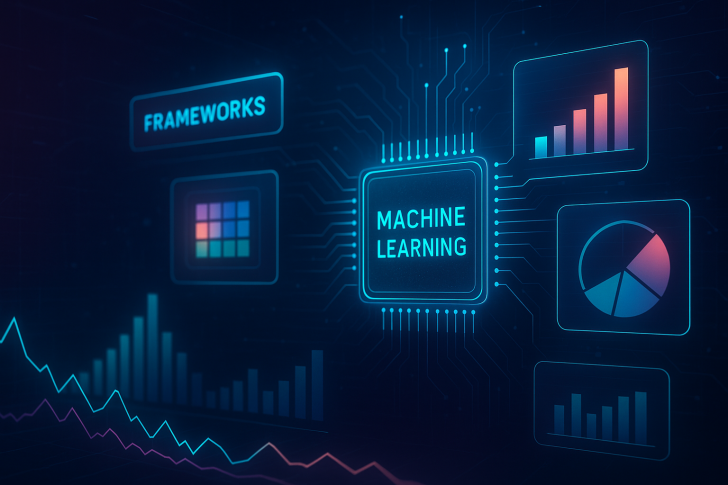⬤ A new breakdown of machine learning categories is making the rounds in the AI community, giving everyone a clear picture of how modern algorithms stack up across supervised, unsupervised, semi-supervised, and reinforcement learning. The chart lays out the tools that power today's AI development—everything from old-school statistical models to cutting-edge reinforcement learning techniques. It really drives home how fundamental these methods have become as companies keep scaling up their AI systems worldwide.

⬤ The visualization maps out supervised learning methods like logistic regression, support vector machines, random forests, and linear regression—stuff that's still doing heavy lifting in tons of commercial AI setups. It also covers unsupervised techniques including K-Means clustering, DBSCAN, principal component analysis, and association algorithms. These techniques handle pattern discovery, spotting anomalies, and breaking down data in corporate, financial, and enterprise applications. Pretty much reflects how AI models are becoming more commercially relevant across sectors like cloud services, automation, and analytics.
The chart provides a structured view of the tools that underpin today's AI development, from classical statistical models to advanced reinforcement learning techniques.
⬤ Another section breaks down reinforcement learning into model-free and model-based methods, focusing on approaches like policy optimization and Q-learning. These systems are getting way more important with autonomous decision-making models and simulations that speed up training. The semi-supervised techniques part highlights how hybrid approaches mixing labeled and unlabeled data are gaining traction as companies build more scalable AI training pipelines.
⬤ These foundational algorithmic categories keep shaping modern AI development. With money pouring into generative models, enterprise AI, and high-performance compute infrastructure, frameworks like this show just how many different methods are driving innovation. This kind of clarity helps companies figure out model complexity, training strategies, and long-term scalability as AI capabilities keep expanding.
 Usman Salis
Usman Salis

 Usman Salis
Usman Salis


